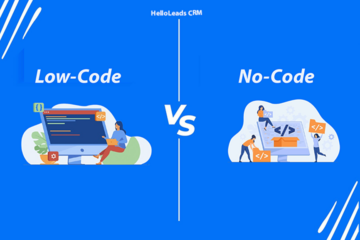
Customer Relationship Manager (CRM) is a business strategy that manages customer and prospect interactions. Implementing a CRM system can help businesses track and analyze customer interactions, purchase history, and communication preferences. CRM tools also help businesses communicate with customers more effectively and efficiently. They can automate routine tasks like sending follow-up emails, scheduling appointments, and tracking customer feedback. By having all customer information in one place, businesses can better understand their customers’ needs and preferences and provide more personalized and targeted interactions.
“CRM is your GPS to a better route on your Business Development journey.” ― Bobby Darnell
In this blog post, we will delve into the goals your business can achieve using a CRM. To fully utilize the capabilities of CRM, it’s essential to define objectives that align with your business goals and prioritize meeting your customers’ needs.
1 . Increased customer satisfaction:

The primary goal that can be achieved using a CRM is to increase customer satisfaction. By utilizing a robust CRM system, businesses can gather and analyze customer data to gain valuable insights into their preferences, behaviors, and needs. This knowledge can be used to deliver personalized and timely customer service, which can lead to higher levels of customer satisfaction. Moreover, with real-time access to customer data, the entire team can provide faster and more efficient customer service, ultimately enhancing customer loyalty and retention rates. By developing strong relationships with their customers, businesses can generate more repeat business and achieve their top goals.
2 . Improved customer retention:

The second goal that can be achieved through a CRM is improved customer retention. A well-implemented CRM system can help businesses track and analyze customer behavior, purchase history, and communication preferences.
Further, a CRM system can help businesses track customer loyalty and retention by monitoring how long a customer has been with the company and how frequently they make purchases. This information can be used to create loyalty programs that reward customers for their continued business, such as offering discounts, exclusive offers, or free products or services. By doing so, businesses can identify opportunities to improve stickiness and increase customer lifetime value, leading to long-term business success.
3 . Increased sales and revenue:
The third goal that can be achieved through a CRM is increased sales revenue which is critical for the survival of any business. To increase sales, it’s essential to focus on selling to the right people. A CRM can help by ensuring that your sales team has a pipeline filled with highly qualified leads and prospects. Not every lead is a good fit for your business, and some are more valuable than others. Businesses can gather and analyse data on their customers, including their purchasing behaviour, preferences, and feedback. This data can then be used to identify highly qualified leads and prospects that are more likely to result in a sale, enabling sales teams to focus their efforts and increase their chances of success. By understanding what customers want and need, businesses can sell more effectively and generate more revenue.
4 . Improved efficiency:
The fourth goal that can be achieved through a CRM is to enhance efficiency by automating manual tasks and improving productivity. By implementing a CRM system, businesses can save time and resources by automating repetitive administrative tasks such as data entry, scheduling appointments, and tracking customer interactions. This allows them to focus on other critical areas such as sales and marketing. Modern CRMs can consolidate customer information from various departments into a single dashboard, streamlining communication and collaboration. Additionally, a CRM system can automate audience segmentation, email follow-ups, post-sale workflows, and invoicing, further increasing efficiency and productivity. Overall, by improving efficiency through CRM, businesses can achieve their goals more quickly and drive growth and profitability.
5 . Improved collaboration and mobility:

The fifth goal that can be achieved through a CRM is improved collaboration and mobility which is crucial for ensuring business continuity and growth. Cloud-based CRM systems offer numerous benefits, including accessibility from any device with an internet connection, greater flexibility, scalability, and security. With the ability to access important customer and sales information using a variety of devices, teams can stay connected and productive, collaborating seamlessly and responding to customer needs in real-time. This level of accessibility and real-time information can help organizations stay agile, responsive, and competitive, enabling them to make informed decisions and take action when needed. By utilizing a CRM system equipped with both mobile and desktop applications, companies can enhance collaboration and mobility, leading to better overall business performance and success.
To conclude, having a CRM is a vital aspect of any business strategy that seeks to establish and sustain strong customer relationships. Regardless of their size, businesses must prioritize investing in an effective CRM solution to deliver exceptional customer experiences. Integrating a quality CRM into your business can help you streamline and automate day-to-day processes, freeing up more time to focus on other crucial areas of your business.
HelloLeads, is one such CRM that provides a simplified and easy-to-use platform which enable businesses to deliver exceptional customer experiences without the added complexity. HelloLeads CRM helps businesses optimize their operations and achieve their objectives more effectively by integrating all the necessary tools and functions into a single platform.
Experience the benefits of streamlined business operations and exceptional customer experiences with Helloleads CRM. Sign up for free using the link and get started today.
Share this blog :










